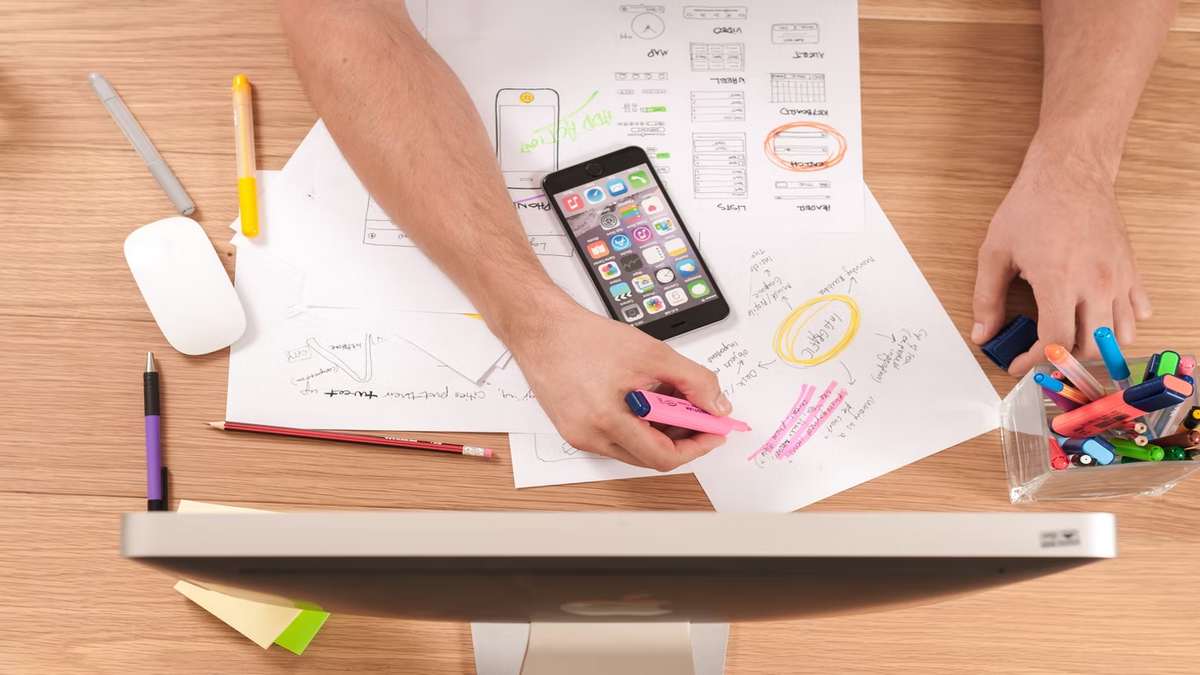As we move further into the 21st century, it’s more important than ever to stay ahead of the curve in terms of website design. In order to create a truly next-level user experience (UX), you need to employ some cutting-edge techniques that set your website apart from the rest.
Here are five tips for making your UX design stand out from the crowd:
- Use 3D effects and animation.
- Employ micro-interactions as 2022 standard in UX design.
- Hyper-personalize your users’ experiences.
- Create immersive experiences with Augmented Reality (AR), Virtual Reality (VR) and Extended Reality (ER).
- Stay up-to-date on the latest trends in UX design. Keep reading for more tips and tricks about these tools that can enhance your web app. Be sure to check whether your UX design company uses it!

1. 3d effects and animation
In the world of web design, it’s all about creating an experience that engages users and keeps them coming back for more. And one way to do that is by incorporating 3D effects and animation into your design. By using 3D effects and animations, websites can transport users to another world and give them a sense of scale that is difficult to achieve with traditional 2D design. Additionally, 3D effects can help to grab the attention of users and hold their interest. Studies have shown that people are more likely to remember information that is presented in a three-dimensional format, making 3D design an effective tool for conveying information. Ultimately, when used effectively, 3D effects and animation can have a positive impact on the way that users interact with and perceive a website.
3D effects and animation can have a significant impact on a website, both in terms of its aesthetics and its functionality. In terms of aesthetics, 3D elements can add depth and vibrancy to a site, making it more visually appealing to visitors. In terms of functionality, 3D effects can help to guide users through a site and improve the overall user experience. For example, 3D buttons and icons can help users to navigate a site more easily, and animated elements can provide valuable information in a concise and engaging way.
By adding an extra dimension, you can add interest and depth to your pages, making them more visually appealing and interactive. Plus, with the right techniques, you can create animations that are both subtle and impactful, adding another layer of engagement for users.
2. Micro-interaction as a 2022 standard in UX design
Have you ever found yourself wondering why a particular website is so easy to use? Or why you keep coming back to it, even though there are other websites that offer similar content or services? There’s a good chance that the website in question employs micro-interactions as part of its user experience (UX) design. Micro-interactions are small, often invisible, elements that work together to create a seamless and intuitive experience for users. When used properly, they can have a significant impact on UX, leading to higher levels of customer satisfaction and loyalty. Here’s a closer look at micro-interactions and how they can benefit your website.
Micro-interactions are typically defined as single-use features that serve a specific purpose. For example, the “like” button on Facebook is a micro-interaction. When you click it, the button changes color and animates in a way that indicates that your action has been registered. Other common examples of micro-interactions include progress bars, error messages, and pop-ups. While they may seem like minor details, micro-interactions play an important role in the overall UX of a website or app. They can help to guide users through complex processes, provide feedback in real-time, and build emotional connections between users and brands.
In order to be effective, micro-interactions must be well-designed and carefully integrated into the overall UX flow. They should be intuitive and easy to use, with clear indications of what actions need to be taken by users. Additionally, micro-interactions should be consistent across all devices and platforms, providing a seamless experience for users regardless of how they access your website or app.
While micro-interactions can have a positive impact on UX, it’s important to use them sparingly. Overuse of micro-interactions can lead to user frustration and confusion, rather than the intended results of improved usability and engagement. When incorporating micro-interactions into your UX design, less is definitely more.
Used judiciously,micro-interactions can be a powerful tool for enhancing UX design. By making user experiences more intuitive and enjoyable, they can lead to higher levels of customer satisfaction and loyalty. As we move into the next era of digital design, micro-interactions are likely to become an increasingly important part of creating outstanding user experiences.

3. Hyper-personalization: how to achieve it?
In a world where there are an endless number of websites, how can you make sure that yours stands out from the rest? The answer is hyper-personalization. By personalizing the user experience on your website, you can ensure that each visitor has a unique and engaging experience. Here are four ways to achieve hyper-personalization on your website:
1. Use data to understand your users. Collect data on who your users are, what they’re interested in, and how they interact with your site. This information will help you create personalized content and experiences for them.
2. Use personalization technologies. There are a variety of personalization technologies available, such as cookies, tracking pixels, and IP addresses. These technologies will help you collect user data and create personalized experiences for them.
3. Create personalized content. Use the data you’ve collected to create content that is relevant and interesting to your users. This could include articles, blog posts, or even product recommendations.
4. Use personalization to improve conversions. Use the data you’ve collected to create targeted offers and call-to-actions that will encourage your users to take the desired action.
4. Immersive experiences with Extended Reality (XR)
In recent years, a new trend has emerged that is helping to create more immersive and engaging experiences for users: extended reality (XR). XR is a broad word that includes augmented reality (AR), virtual reality (VR), and mixed reality (MR). By using XR technologies, designers can create products and experiences that are more realistic and interactive than ever before. As a result, XR is becoming an increasingly popular tool for UX designers.
One of the advantages of XR is that it can help to create more lifelike experiences for users. For example, VR can be used to transport users to different environments or give them a firsthand look at products or services. AR can also be used to create realistic simulations, such as of a product being used in its intended environment. This helps to give users a better understanding of how the product works and how it will fit into their lives. In addition, XR technologies can be used to create interactive and engaging experiences. For example, MR can be used to create games or other experiences in which users can interact with virtual objects in their realities. As XR technologies become more advanced, they will continue to revolutionize UX design and help designers create more immersive and engaging experiences for users.
Conclusion
A website is a lot like a party. You want your guests to have a good time, so you make sure the music is playing, the food is plentiful, and the conversation is flowing. But what happens when your guests start to get bored? That’s where micro-interactions come in. Micro-interactions are those tiny moments of delight that keep users engaged with your website. Then, learn the tastes of your guests and personalize the look and offers accordingly. Lastly, don’t shy away from immersing your website guests completely in the environment of your website and entertain them with VR and AR experiences. So if you’re looking for a way to take your website design to the next level, consider making these features a part of your standard UX toolkit.



